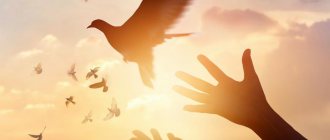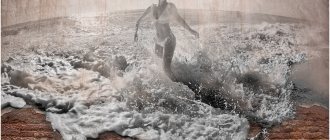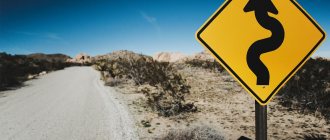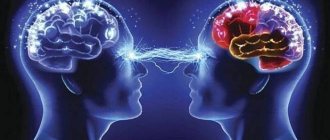Adrenaline, norepinephrine, dopamine, serotonin are biogenic amines that are hormones and neurotransmitters. Their content increases significantly in biological fluids in some neuroendocrine neoplasms. * The study determines the quantity of each indicator separately.
Synonyms Russian
Free catecholamines in the blood.
English synonyms
Catecholamines - adrenaline, norepinephrine, dopamine + serotonin.
Research method
High performance liquid chromatography.
Units
Pg/ml (picograms per milliliter), ng/ml (nanograms per milliliter).
What biomaterial can be used for research?
Venous blood.
How to properly prepare for research?
- Children under 1 year of age should not eat for 30-40 minutes before the test.
- Children aged 1 to 5 years should not eat for 2-3 hours before the test.
- Eliminate avocados, bananas, eggplants, pineapples, plums, tomatoes, and walnuts from your diet for 72 hours before the test.
- Do not eat for 12 hours before the test; you can drink clean still water.
- Discontinue (in consultation with your doctor) sympathomimetics 14 days before the study.
- Completely avoid (in consultation with your doctor) taking medications for 24 hours before the test.
- Avoid physical and emotional stress for 24 hours before the test.
- Do not smoke for 2 hours before the test.
General information about the study
Catecholamines are a group of similar hormones produced by the adrenal medulla. The main catecholamines are dopamine, adrenaline (epinephrine) and norepinephrine. They are released into the blood in response to physical or emotional stress and are involved in the transmission of nerve impulses to the brain, promote the release of glucose and fatty acids as energy sources, and dilate bronchioles and pupils. Norepinephrine constricts blood vessels, increasing blood pressure, while adrenaline increases heart rate and stimulates metabolism. After completing their action, these hormones are broken down into physiologically inactive substances (homovanillic acid, normetanephrine, etc.).
Normally, catecholamines and their breakdown products are present in the body in small quantities. Their content increases significantly for a short time only under stress. However, chromaffin and other neuroendocrine tumors can produce large amounts of catecholamines, leading to significant increases in the levels of these hormones and their breakdown products in the blood and urine. This threatens long-term or short-term increases in blood pressure and, accordingly, severe headaches. Other symptoms of elevated catecholamines include shaking, sweating, nausea, restlessness, and tingling in the extremities. In addition to catecholamines, pheochromocytomas can synthesize serotonin, adrenocorticotropic hormone, vasoactive intestinal peptide, somatostatin and other hormones. There is no correspondence between the size of the tumor, the level of catecholamines in the blood and the clinical picture.
Serotonin is not a catecholamine, but also belongs to the group of biogenic amines with hormonal and neurotransmitter activity. It is synthesized from the amino acid tryptophan and is stored in enterochromaffin cells of the gastrointestinal tract (80-95% of the total), various structures of the brain, mast cells of the skin, platelets and some other endocrine organs. Serotonin lowers the threshold of pain sensitivity, regulates the function of the pituitary gland, affects vascular tone, blood clotting, motility and secretory activity of the gastrointestinal tract.
Approximately 90% of chromaffin tumors are located in the adrenal glands. Most are benign and do not spread beyond the adrenal glands, although they may continue to grow. Without further treatment, as the tumor grows over time, symptoms of the disease sometimes become more severe. High blood pressure caused by a chromaffin tumor can cause kidney and heart damage and even hemorrhage or a heart attack.
In most cases, these tumors are removed surgically, after which the catecholamine levels are significantly reduced, and tumor-related symptoms and complications are alleviated or disappear altogether.
A blood test reveals the amount of the hormone at the time of taking the test, while a urine test reveals the amount of the hormone over the previous 24 hours.
What is the research used for?
- For the diagnosis of chromaffin tumors in symptomatic patients.
- To monitor the effectiveness of treatment of a chromaffin tumor, in particular after its removal, to ensure that there are no relapses.
When is the study scheduled?
- If a chromaffin tumor is suspected.
- If the patient has chronic hypertension, accompanied by headache, sweating, and rapid pulse.
- When hypertension is not treatable (since hypertensive patients with chromaffin tumors are often resistant to traditional therapy).
- If an adrenal tumor or neuroendocrine tumor was detected during a scan, or if the patient has a hereditary predisposition to their formation.
- When monitoring the condition of patients who have already been treated for chromaffin tumor.
What do the results mean?
Reference values
- Adrenalin
| Age | Reference values, pg/ml |
| 2-11 days. | 36.0 — 400.0 |
| 11 days — 4 months | 55.0 — 200.0 |
| 4 months - 1 year | 55.0 — 440.0 |
| 1-2 years | 36.0 — 640.0 |
| 2-3 years | 18.0 — 440.0 |
| 3-18 years | 18.0 — 460.0 |
| > 18 years old | 10.0 — 200.0 |
- Norepinephrine
| Age | Reference values, pg/ml |
| 2-11 days. | 170.0 — 1180.0 |
| 11 days — 4 months | 370.0 — 2080.0 |
| 4 months - 1 year | 270.0 — 1120.0 |
| 1-2 years | 68.0 — 1810.0 |
| 2-3 years | 170.0 — 1470.0 |
| 3-18 years | 85.0 — 1250.0 |
| > 18 years old | 80.0 — 520.0 |
- Dopamine: 5.6 - 44 pg/ml.
- Serotonin: 50 - 220 ng/ml.
Since the results of this test can be influenced by many factors, and chromaffin tumors are quite rare, the results are often false positive. To make a confident diagnosis, a general examination of the patient is necessary: an assessment of his physical and emotional state, the medications he takes and the food he eats. Once interfering factors have been identified and corrected, the test is often repeated to determine whether catecholamine levels will still be high. In addition, a test for metanephrine in the blood and/or urine and a magnetic resonance imaging scan of the tumor may be ordered to confirm the results.
Elevated catecholamine levels in a patient who has previously been treated for a chromaffin tumor indicate recurrence of the tumor or that therapy was not entirely effective.
If the concentration of catecholamines is normal, then the presence of a chromaffin tumor is unlikely. However, these tumors do not always produce catecholamines at a constant rate. If there have been no recent exacerbations of hypertension, then the concentration of catecholamines may be close to normal even with existing pheochromocytoma.
Possible causes of increased serotonin levels: carcinoid tumors; medullary thyroid cancer; testicular tumors; celiac disease; endocarditis; dumping syndrome; acute intestinal obstruction; cystic fibrosis; acute myocardial infarction; taking medications (paracetamol, diazepam, naproxen, pindolol). Reasons for decreased serotonin levels: mastocytosis; phenylketonuria; Down syndrome; carcinoid tumors of the rectum; Hartnup's disease; taking medications (ethanol, imipramine, isoniazid, sulfasalazine).
What can influence the result?
- Medicines you are taking (acetaminophen, aminophylline, amphetamines, appetite suppressants, caffeine-containing medications, chloral hydrate, clonidine, dexamethasone, diuretics, epinephrine, ethanol, insulin, imipramine, lithium, methyldopa, nicotine, nitroglycerin, nasal drops, tricyclic antidepressants, and vasodilators ).
- Food consumed (tea, coffee, alcohol).
- Stress.
Healthy diet: how to get serotonin and not gain extra pounds during the holidays
The quarantine lack of happiness hormones in conditions of self-isolation, restaurant closures and total stress can be replenished at the festive table. It is enough to include protein foods rich in tryptophan, magnesium, manganese and potassium in your menu. Leading biotechnologists reported this to Izvestia. New Year's salads can be seasoned not with mayonnaise, but with cod liver, and sandwiches with caviar can be replaced with rolls with cheese and fish. This will allow you to avoid gaining extra pounds and get the right dose of microelements. It’s worth thinking twice about including trendy superfoods in your diet: chia seeds and quinoa grains have a number of contraindications. For people who have already recovered from coronavirus infection, scientists recommend consuming more spices and chili peppers at the holiday table: such products strengthen the body's defense systems.
Chemistry of happiness
Food can become one of the levers of influence on the mood on New Year’s Eve, Andrei Skalny, assistant at the department of medical elementology at the RUDN Medical Institute (a university participating in the project to increase the competitiveness of education “5-100”), told Izvestia. This is especially important during a pandemic.
– This is possible through chemical influence through the intake of tryptophan (an amino acid that is a precursor to the happiness hormone serotonin. – Izvestia), magnesium, manganese, potassium in foods that are especially rich in them. On the other hand, the best solution would be to exclude “heavy” dishes, excess portions of food and alcohol, the expert believes.
There is a lot of tryptophan in cheese, fish, and some types of nuts, noted Victoria Ilyina, an engineer at the Faculty of Biotechnology at ITMO.
It is important to eat protein foods, which mainly contain tryptophan, in combination with vegetables (excluding potatoes and beets - the main vegetable sources of starch and sugar), noted Galina Rybakova, associate professor of the department of commodity science and examination of goods at the Institute of Trade and Services of the Siberian Federal University.
– When trying to lift your mood with food, you need to remember that it’s not the quantity of food that matters, but the regularity of the components responsible for mood entering the blood. There is no need to increase the portion of meat, fish or egg dishes. You should distribute them wisely throughout the day within regular portions, the specialist advised.
The expert also recommends avoiding bread, pasta and cereals, since their consumption causes an “insulin swing” - a sharp fluctuation in the body’s level of the hormone responsible for the utilization of glucose. This leads to increased appetite and uncontrollable hunger.
A powerful argument
According to international studies, many people have gained extra pounds during the epidemic. Now obesity itself is turning into a pandemic, said the chief freelance cardiologist of the Russian Ministry of Health, Sergei Boytsov.
Therefore, during the holidays there is a reason to think about how not to gain excess weight. It is necessary to create a menu in such a way as to get the maximum amount of substances from food that satisfy the brain’s needs in terms of mood formation, and at the same time not deviate too much from tradition, says Galina Rybakova.
– You can eat fatty fish (and this is not only trout or salmon, but also herring, mackerel, carp). Or, as a replacement, the liver of cod fish (including inexpensive pollock). Its presence will help reduce the proportion of mayonnaise in the salad, the expert noted.
Traditionally, caviar is served with butter on bread or in tartlets. The dish will remain beautiful and become healthy if you replace the butter with cream cheese, and instead of bread, take pieces of any salted red fish and wrap the filling with dill or green onions in them, and put caviar on top, Galina Rybakova emphasized.
“This year’s safe anti-stress menu may look something like this: on an elegant plate - a portion of baked aromatic meat (or poultry, fish) surrounded by bright vegetables, interspersed with pine nuts,” noted Andrey Skalny. – As a snack – a salad of fresh vegetables with lentils, olives and pomegranate seeds. A glass of dry champagne with a slice of chocolate for dessert.
By maintaining the balance of consumed and expended energy, you can maintain normal weight, emphasized Irina Potoroko, head of the Department of Food and Biotechnology at the Higher Medical and Biological School of South Ural State University.
“Therefore, on the eve of the New Year, it is worth short-term reducing the calorie content of food consumed, including plant foods (preferably vegetables), reducing the fat content of fermented milk products, or increasing physical activity,” she advised.
Superfood secrets
People who have already had COVID-19 should have a special menu. During the illness, patients lost the ability to smell and taste food. When these feelings returned, those who had recovered could develop a craving for brighter tastes: spiciness and even bitterness. Such patients report that they have begun to use more spices, pepper, and cinnamon, Andrei Skalny told Izvestia.
– There have been no scientific studies of this phenomenon yet, but the very fact of the presence of spices in the diet is positive. This is a source of substances with antioxidant activity, they are rich in vitamins and microelements. For example, garlic - selenium, turmeric - magnesium, chili pepper - vitamin C. Perhaps changing preferences has a protective effect, the expert suggested.
Therefore, it is worth including these foods in your diet during the holidays. Various scientific teams are also studying the effect of superfoods on the prevention and course of COVID-19. The products included in this list are traditionally “overseas”, which were not known to us until recently, said Natalya Pugacheva, a nutritionist at the Health Management Clinic of the Institute of Personalized Medicine of Sechenov University.
– Although the famous goji berries (also known as wolfberries, also known as wolfberries) grow well in our latitudes, they were not eaten because of their toxicity in a fresh, undried state. In China, they have long learned to safely use these small red berries, and we willingly buy them in the hope of super properties. They contain very high amounts of beta-carotene (almost 900% of the daily requirement of 100 g), vitamin C, calcium and iron. Chia seeds can be the basis of a dessert. The high content of calcium, magnesium, manganese, copper, and iron makes chia a good addition to a healthy diet, says the nutritionist.
However, this category of products must be treated with caution, warned Galina Rybakova. For example, chia seeds are contraindicated for pregnant women due to their ability to disrupt intestinal motility.
In any case, nothing should happen to a healthy person from one day of excessive celebration, said Denis Baranenko, head of the international scientific university ITMO.
“But one-time excessive consumption of alcohol reduces immunity; in this difficult year it is especially important to avoid this,” the scientist noted.
Experts also advise not to forget about water, fruits and vegetables. A glass of water for every serving of alcohol will protect you from a severe hangover. And fruits and vegetables are rich in fiber, which will help form the food bolus and remove fatty foods. In addition, they will take up a lot of space in the stomach and prevent you from eating too much.
Link to publication: Izvestia











